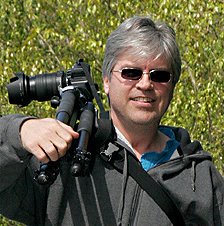 On our first full day in Guangzhou, one of my former students and her husband took us to one of my favorite spots in the city - Chen Jia Ci, or the Chen Clan Temple. It is also known as the Chen Family Academy....I don't really know why it has a couple of different English names, but "Academy" is a far more appropriate term to use that "Temple."
On our first full day in Guangzhou, one of my former students and her husband took us to one of my favorite spots in the city - Chen Jia Ci, or the Chen Clan Temple. It is also known as the Chen Family Academy....I don't really know why it has a couple of different English names, but "Academy" is a far more appropriate term to use that "Temple."The place was originally built as a family temple and a sanctuary for family members to study, but is now used as a traditional/folk art academy and is considered one of Guangzhou's top tourist attractions.
According to one of the official tourism sites, here's some history about the academy. "In the late of the Qing Dynasty (1644-1911), a man named Chen got the third place in the highest imperial examination and had conferred upon him a distinguished office title which made the Family Chen well-known. Later someone suggested that all the Chen's families raise money to build a temple to sacrifice to the ancestors and encourage their offspring likewise to study hard. Therefore, the temple was finished in 1894 with the money donated by Chen's families in 72 counties of Guangdong Province as well as some overseas members of Family Chen.
"The temple is a compound complex consisting of nine halls, six courtyards and nineteen buildings connected by corridors, all separated by walls from the outside world. A pair of stone drums in front of the entrance door, measuring 2.55 meters (about 8.36 feet) in height and two colored drawing pictures of door-god of four meters (about 13 feet) height are said to be the best in Guangdong.
"The compound was constructed in the traditional Chinese symmetrical style and the main hall, the Juxian Hall is in the center of the temple. Juxian Hall was once a place for clansmen to assemble before the establishment of the temple and now it is used as an ancestral hall. In front of the hall is a stone gazebo surrounded by stone balustrades. In the hall there is an exquisitely carved folding screen which is an excellent example of woodcarving."
The top photo is one of the many corridors in the complex that connects the different buildings. The bottom photo is one of the stone lions at the entry. The lions signify power and are there to keep evil and misfortune away.The temple was somewhat pillaged during the Cultural Revolution. Most of the contents were burned, but the structure itself miraculously escaped demolition. If my memory serves me correctly, the building were used as either a factory or a slaughterhouse during the cultural revolution and it fell into considerable disrepair. Since then, the all levels of government in China have been spending a lot to restore the place to its former glory. There is currently a very large construction project going on in front of the Academy that will give the place a massive courtyard-styled entry way. Both Wendy and I are looking forward to a return trip to Guangzhou to see the changes. We suspect that most of the construction should be finished by November when Guangzhou hosts the 2010 Asian Games.
For Wendy's take on the Chen Clan Temple, check out her blog.





No comments:
Post a Comment